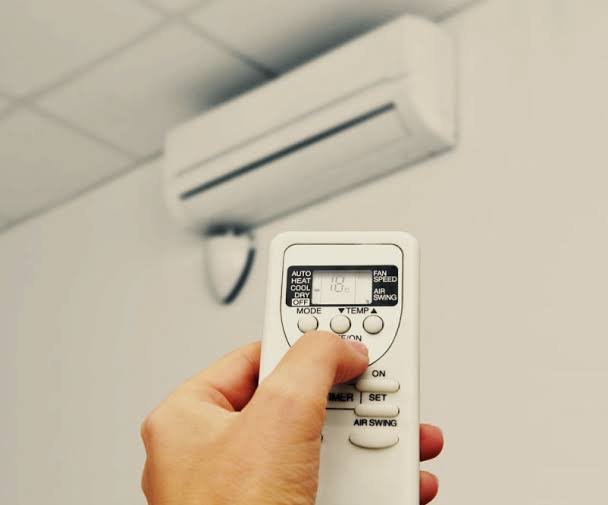
During the warm summer months, air conditioning is essential for creating a pleasant indoor environment. The thermostat is the nerve centre of the cooling system, allowing the user to manage the temperature and the flow of cool air. Problems with thermostat can cause issues like aircon not cooling properly, thus having a properly functioning aircon is important. For that visit https://www.socool.sg/why-is-your-aircon-not-cold/.
Thermostats, however, share common problems with other electronic devices, including display and connection faults that can render them useless. This article will discuss typical issues with air conditioning thermostats and offer advice on how to fix them. For more guidance, visit https://www.socool.sg/.
- Blank Display:
One of the most typical thermostat problems is a completely blank screen. There are several potential causes and solutions to consider if your thermostat’s display remains dark:
- Power Supply: Verify that electricity is being supplied to the thermostat. If your thermostat uses a battery, make sure it has fresh batteries. If your thermostat is hardwired, you should verify that electricity is getting to it by switching off the breaker.
- Loose Connections: Check the thermostat’s wiring to see if it’s properly connected to the air conditioner. Carefully reattach any cables that have been detached or loose.
- Faulty Display Panel: If none of those work, the fault may lie with the screen itself and require replacement. If this happens, you should call a expert or think about getting a new thermostat.
- Unresponsive Buttons:
Here are some things to try if the thermostat’s buttons aren’t working and you can’t change the temperature or use the menu:
- Clean the Buttons: Accumulation of dust and debris around the buttons might reduce their effectiveness over time. Make sure there is nothing blocking the buttons and wipe the surface clean with a soft cloth.
- Check for Moisture: When exposed to liquids, buttons might become sticky or unresponsive. If you think moisture may be at blame, you should dry the thermostat completely.
- Programmable Update: Frequent programmable updates may be necessary for some thermostat models to ensure peak functionality. If an update is available, check the manufacturer’s website or read the manual to learn how to install it.
- Connectivity Issues:
Issues with the thermostat’s connection to the air conditioner might cause temperature fluctuations or other complications. Here’s how to investigate and fix similar problems:
- Check Wi-Fi Connection: If your thermostat can communicate through Wi-Fi, you should use a reliable network ake sure the thermostat’s Wi-Fi credentials are correct and try restarting the network if that doesn’t work.
- Range and Interference: The Wi-Fi signal can be weakened if there is some distance or physical barrier between the thermostat and the router. If the router is too far away from the thermostat, try moving it or installing a Wi-Fi extender to boost the signal. Further, keep the thermostat away from potential interference sources such cell phones and microwaves.
- Incorrect Temperature Readings:
If your air conditioner’s thermostat keeps showing the wrong temperature, try these fixes:
- Calibration: You can adjust the settings on some thermostats. If your thermostat allows for this adjustment, check the handbook to see how to make the appropriate adjustments. Here, a reference thermometer is used to calibrate the displayed temperature to an accurate temperature.
- Sensor Placement: The thermostat’s temperature sensor needs to be in the right place for it to work properly. Locate it where it won’t be subjected to excessive heat from the sun, drafts, or anything else. If the sensor is not in the right spot, move it as directed by the manufacturer.
- Replace Sensor: If the problem persists after calibrating and moving the sensor, it may be defective. Get in touch with the thermostat’s maker or hire expert to swap out the broken sensor.
- Incorrect Programming:
Inefficiency or discomfort may result from incorrect thermostat settings. The following troubleshooting measures should be taken if you find that the air conditioner is not functioning in accordance with your predetermined settings:
- Review Programming Settings: Check the thermostat’s settings to make sure the temperature and time of day correspond to your preferences. If the content isn’t to your liking, feel free to make the necessary changes.
- Reset and Re-Program: Consider resetting the thermostat to its factory settings if the temperature is consistently too high or too low, or if you suspect a programming problem. After resetting, program the thermostat to your specifications, paying special attention to the accuracy of the schedule and temperature settings.
- Improper Humidity Regulation:
To keep the indoor humidity at a healthy level, several thermostats have humidity adjustment settings. If your thermostat is giving you erroneous humidity readings or control, try these fixes:
- Verify Sensor Placement: Make that the humidity sensor is positioned properly, far from any potential moisture or airflow sources. For best results, position sensors as directed by the manufacturer.
